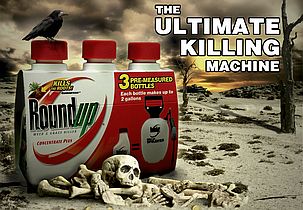Find cancer early. Test treatments


Find cancer early. Test treatments–good news. During last week’s radio show we visited with Jenny Hrbacek RN, author of Cancer Free! Are You Sure? and Gus Kotsanis, MD about the very early detection of cancer, its re-occurrence and integrative treatments. I highly recommend that everyone read Jenny’s book. It contains valuable information about all aspects of cancer including prevention, very early clues and how better to know what kind of treatment might be best. I asked her to be my first guest blogger this week to follow up with some bare-bones highlights on testing out of her book. Take it away, Jenny:
“As of 2015, during their lifetime, 50% of men and 40% of women will receive a cancer diagnosis. We can’t hide from cancer anymore. Even as a nurse, after my own diagnosis, I spent three years looking for answers. I found that we can indeed do better!
Early detection. It seems unbelievable that we are not utilizing the very best in early detection testing for cancer. I hope that you know that I am not talking about mammograms or PSA counts. We absolutely don’t have to wait for the lump or bump. In my book, I describe about 27 different tests. Some are specific to identifying certain cancers; some find malignancy early; and others detect conditions that can lead to cancer. I explain each test; how to get it, how much it costs; the benefits, limitations and more. Here are a few you might want to check into: RGCC Oncocount, RGCC Oncostat, ONCOblot, CA Profile Plus, Red Drop, Nagalase, EarlyCDT, Cologuard, hCG, and an occult blood stool test. It can be tempting to put our heads in the sands of ignorance and just hope that we are okay, but let me just say that a late stage diagnosis of cancer can be tragic and financially debilitating. I encourage everyone to insist on the very best testing available in order to find cancer very early when it’s much easier to stop and reverse—many times without toxic therapies.
Metastasis: During the show, we talked about circulating tumor cells (CTC’s). These cells are the key to early warning of spreading. We know that any tumor over 2 mm in size can shed these CTC’s into the blood stream. There is an FDA and insurance approved test for CTC’s called “Cell Search”. This is NOT an early detection test because the cancer must have already spread to other organs for this test to detect CTC’s. Therefore, it is used if a metastasis of breast, colon, or prostate cancer is already suspected by the doctor. I wanted to address this because I don’t want anyone to get the Cell Search CTC test and think that a “zero” CTC count means that they don’t have a cancer problem. If you want to get a much more sensitive test of CTC’s, I suggest RGCC, Research Genetic Cancer Center in Greece. There are many practitioners in the U.S. that use this test. Go to www.RGCCUSA.com for more information. [Martie note: Click here to listen to an archived interview we did on this test with guests Dr. Kotsanis and Dr. Hammon.]
Treatment options: You have probably heard of people that did not respond to various treatments or as I put it, “failed therapy”. We don’t have to guess any more or use cookie cutter plans of treatment because sensitivity testing is available for both mainstream chemotherapeutic agents and for natural substances. I used a test called “Oncostat” which is also from RGCC. As an example, my testing showed that IV vitamin C was 65% effective for killing my CTC’s. I used that treatment for 6 months and it worked! I was able to lower my CTC’s from 14.2 to 2.9. There are other companies that require a piece of the tumor for analysis to predict sensitivity levels. However, the RGCC test that I used only requires a blood sample and works with the living CTC’s. I also recommend the RGCC test because it can find these CTC’s before there is a tumor large enough to biopsy for a tissue sample.
There is so much more that I would like to share. I was really surprised to learn how many options exist. I’ve done the research and packaged up the information in my book. I just pray that it gets into the hands of those that need the information…information that I wish that I had known about years ago!
Thank you to Martie and Dr. Kotsanis for inviting me to share this message. Wishing you abundant health, Jenny”
Thank YOU, Jenny for your tremendous book and taking time to write this.



















 y that the farmer would have little or no reason to use Roundup®.
y that the farmer would have little or no reason to use Roundup®. 


 Premature aging, pain, fatigue and serious diseases are caused or at the least worsened by certain effects of modern living. The far infrared (FIR) sauna is a wonderful tool for reversing much of that damage. It is also recommended for helping with a host of health issues–everything from Asthma and Fibromyalgia to Cardiovascular health and Weight Loss. When you read the fundamental ways this energy medicine helps the body, it will be easy to see why that list is very long indeed.
Premature aging, pain, fatigue and serious diseases are caused or at the least worsened by certain effects of modern living. The far infrared (FIR) sauna is a wonderful tool for reversing much of that damage. It is also recommended for helping with a host of health issues–everything from Asthma and Fibromyalgia to Cardiovascular health and Weight Loss. When you read the fundamental ways this energy medicine helps the body, it will be easy to see why that list is very long indeed.  penetrating
penetrating desirable 4-14 micron energy without having to defend against other rays. The body is very particular about the energy frequencies that it finds beneficial. To the left is a patented ceramic chip that only the Relax far infrared sauna has. This chip is “tuned” to emit a certain frequency of far infrared in the 4.4 to 14.4 micron range. This is the perfect range of infrared for the body to absorb. Because of these chips (the Relax sauna contains 40 of them) the sauna emits both the highest and cleanest levels of infrared compared to any other sauna. In fact, this
desirable 4-14 micron energy without having to defend against other rays. The body is very particular about the energy frequencies that it finds beneficial. To the left is a patented ceramic chip that only the Relax far infrared sauna has. This chip is “tuned” to emit a certain frequency of far infrared in the 4.4 to 14.4 micron range. This is the perfect range of infrared for the body to absorb. Because of these chips (the Relax sauna contains 40 of them) the sauna emits both the highest and cleanest levels of infrared compared to any other sauna. In fact, this sauna is the only portable infrared sauna that uses the technology certified by the FDA as a medical device. See more about my choice below.
sauna is the only portable infrared sauna that uses the technology certified by the FDA as a medical device. See more about my choice below.




